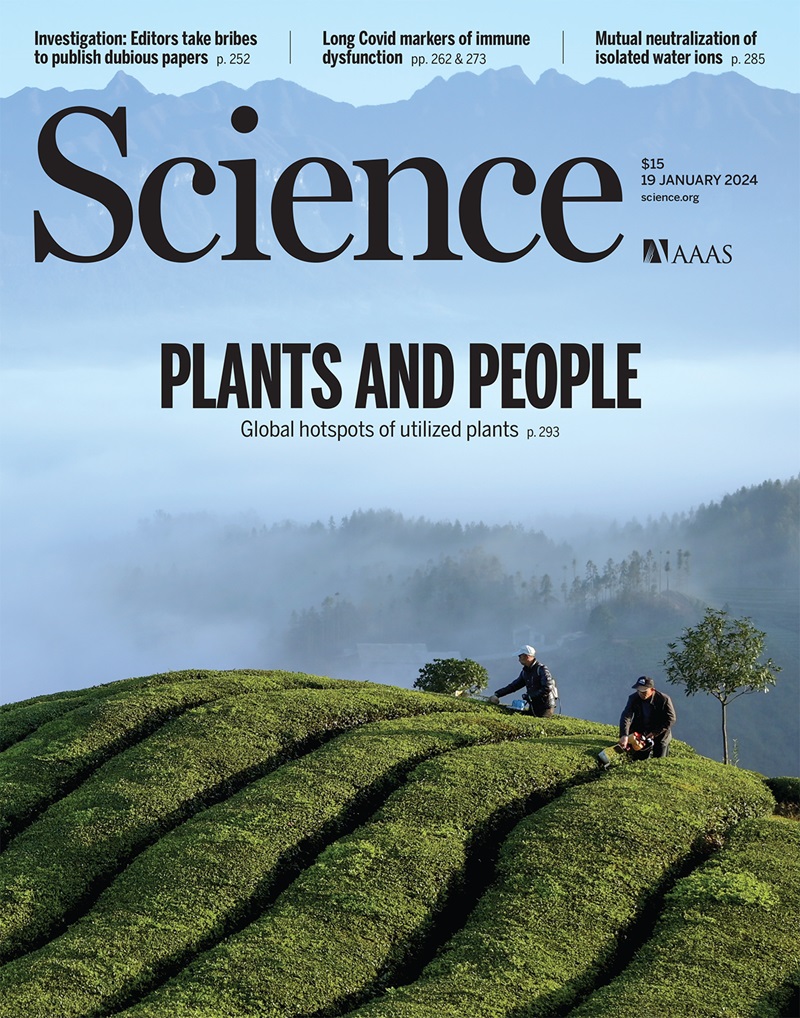A solution-processed radiative cooling glass
IF 44.7
1区 综合性期刊
Q1 MULTIDISCIPLINARY SCIENCES
引用次数: 0
Abstract
Passive daytime radiative cooling materials could reduce the energy needed for building cooling up to 60% by reflecting sunlight and emitting long-wave infrared (LWIR) radiation into the cold Universe (~3 kelvin). However, developing passive cooling structures that are both practical to manufacture and apply while also displaying long-term environmental stability is challenging. We developed a randomized photonic composite consisting of a microporous glass framework that features selective LWIR emission along with relatively high solar reflectance and aluminum oxide particles that strongly scatter sunlight and prevent densification of the porous structure during manufacturing. This microporous glass coating enables a temperature drop of ~3.5° and 4°C even under high-humidity conditions (up to 80%) during midday and nighttime, respectively. This radiative “cooling glass” coating maintains high solar reflectance even when exposed to harsh conditions, including water, ultraviolet radiation, soiling, and high temperatures.
一种溶液处理的辐射冷却玻璃。
被动式日间辐射冷却材料可以通过反射阳光并向寒冷的宇宙中发射长波红外辐射(约3开尔文),将建筑物冷却所需的能量减少60%。然而,开发既能制造和应用,又能显示长期环境稳定性的被动冷却结构具有挑战性。我们开发了一种随机光子复合材料,该复合材料由微孔玻璃框架组成,该框架具有选择性LWIR发射以及相对较高的太阳反射率和氧化铝颗粒,氧化铝颗粒强烈散射阳光并防止制造过程中多孔结构的致密化。即使在高湿度条件下(高达80%),这种微孔玻璃涂层也能在中午和夜间分别使温度下降约3.5°C和4°C。这种辐射“冷却玻璃”涂层即使暴露在恶劣的条件下,也能保持高的太阳反射率,包括水、紫外线辐射、污垢和高温。
本文章由计算机程序翻译,如有差异,请以英文原文为准。
求助全文
约1分钟内获得全文
求助全文
来源期刊

Science
综合性期刊-综合性期刊
CiteScore
61.10
自引率
0.90%
发文量
0
审稿时长
2.1 months
期刊介绍:
Science is a leading outlet for scientific news, commentary, and cutting-edge research. Through its print and online incarnations, Science reaches an estimated worldwide readership of more than one million. Science’s authorship is global too, and its articles consistently rank among the world's most cited research.
Science serves as a forum for discussion of important issues related to the advancement of science by publishing material on which a consensus has been reached as well as including the presentation of minority or conflicting points of view. Accordingly, all articles published in Science—including editorials, news and comment, and book reviews—are signed and reflect the individual views of the authors and not official points of view adopted by AAAS or the institutions with which the authors are affiliated.
Science seeks to publish those papers that are most influential in their fields or across fields and that will significantly advance scientific understanding. Selected papers should present novel and broadly important data, syntheses, or concepts. They should merit recognition by the wider scientific community and general public provided by publication in Science, beyond that provided by specialty journals. Science welcomes submissions from all fields of science and from any source. The editors are committed to the prompt evaluation and publication of submitted papers while upholding high standards that support reproducibility of published research. Science is published weekly; selected papers are published online ahead of print.
 求助内容:
求助内容: 应助结果提醒方式:
应助结果提醒方式:


